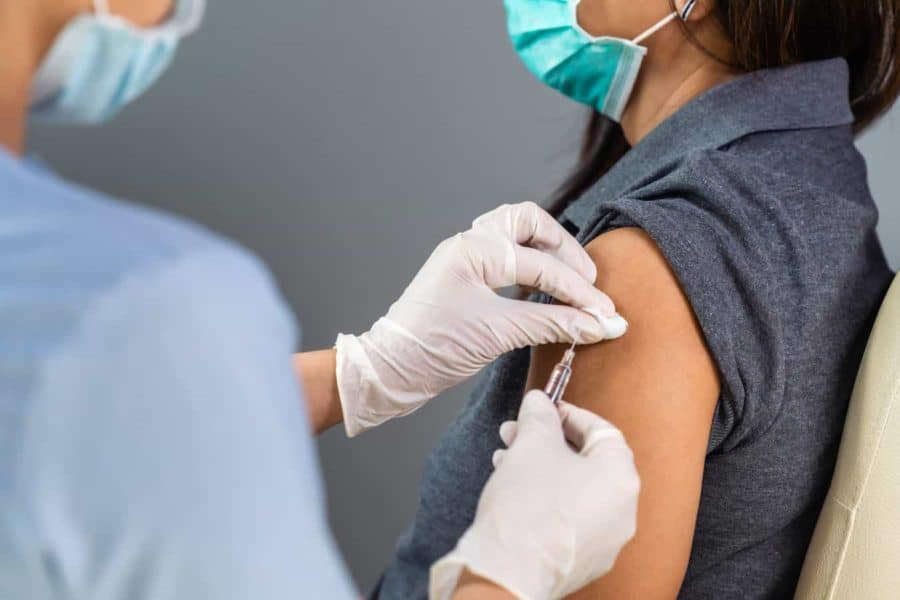The demand for COVID-19 vaccines currently outstrips supply, but at some point in the next few months that will likely reverse. Yet likely adoption of the vaccine may be waning. According to a survey of Americans conducted in December, only 63% of individuals surveyed said they would take the COVID-19 vaccine, down from 83% in March.
“That suggests that we need to have good strategies in place very soon to ensure the greatest possible uptake of vaccines,” said Wandi Bruine de Bruin, co-director of the Behavioral Sciences Program at the Schaeffer Center.
She joined a panel of experts at a webinar co-hosted by the USC-Brookings Schaeffer Initiative for Health Policy and the USC Behavioral Science and Well-Being Policy Initiative and moderated by Dana Goldman, director of the Schaeffer Center and interim Dean of the USC Price School of Public Policy.
Bruine de Bruin laid out a five-point plan:
- Make the campaign understandable with the use of accessible words, such as “shots” instead of vaccines. This could also preempt the search strategy of anti-vaccination websites.
- Make it easy to get inoculations, possibly scheduling appointments by default, and creating community vaccination centers.
- Make it the norm through social media and other outreach, so that people feel they are part of a universal movement.
- Make it fair and transparent, so that waiting for a shot is understandable and not a case of others unfairly getting vaccinated first.
- Address people’s concerns about safety and efficacy.
Richard Besser, MD, president and chief executive officer of the Robert Wood Johnson Foundation, agreed that vaccine adoption “is an increasingly important topic,” especially for Black and Latino communities that are disproportionately impacted by Covid-19. It will be important to get trusted voices for those communities to deliver the message that the vaccines are essential, he said.
“These vaccines are incredible, but were developed faster than any before them,” he said. “That has given rise to concern. I watched the FDA hearings and I am very assured. But my sense of risk is not the same as others.”
Alison Buttenheim is the scientific director of the Center for Health Incentives and Behavioral Economics at the University of Pennsylvania. She agreed and said it’ll take experts from across disciplines coming together to successfully get the vaccines into arms. This coordinated, dynamic team should focus on making it easy to find information and to get appointments, overcoming resistance by using vaccine “champions and ambassadors,” and promoting their stories. A final important, and possibly the most important element, should be showcasing the excitement of the moment, knowing that a better life follows the vaccines.
Individuals who are hesitant about vaccines but are not hard liners are an important target for public health experts and doctors, added Jason Doctor. “This is the group that can be encouraged and can get us over the hump to herd immunity,” he said. Doctor is Director of Health Informatics at the Schaeffer Center.
He noted that 42% of Republicans are hesitant, as are 36% of persons aged 30 to 49. In addition, 35% of rural residents, 35% of Blacks, and even 29% of healthcare workers report being hesitant about the vaccine.
For this group, clinicians will be critical to making the case and using their relationships with patients, he said. When seeing a patient, the effort should be made to get the patient vaccinated that day. “Physician discussions are appreciated by patients, even on sensitive topics,” he said. Arming the physician with the disease and vaccination status of the patient via electronic health records would be a big help.
Goldman asked if more vaccines might be delivered if the protocol called for giving it to anyone who wants it first. Besser said the country should stick to the priorities outlined by the CDC. “The system is so rife with structural racism, that I worry that people with social advantages would simply move to the front of the line.”
What about paying people to take the vaccines? Doctor thought that could send a signal that the vaccines might be harmful if people had to be paid to take them.
What about making the vaccines mandatory? Besser said some mandates might be useful when vaccines become more widely available, perhaps for getting on an airplane. But a broad mandate would not be helpful. “We just need to make it as easy as possible to take them,” he said.
How to handle telling people about rare but possible risks in vaccines? “From a trust perspective, transparency rules,” Besser said. “You need to be upfront. The risks are there, but miniscule. In discussions with patients, you need to frame the risk, not hide it.”
Schaeffer Center experts are informing the conversation with their analysis on its impact on health, the economy, public policy, and human behavior. Learn more about this work here.


